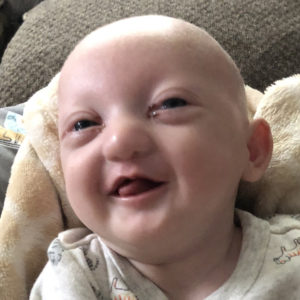If your baby has been diagnosed with ankyloblepharon-ectodermal defects-cleft lip and/or palate (AEC) syndrome or if you suspect he or she might be affected, you have come to the right place! Welcome. We are glad that you found us! Here are some key things to know and resources to help you care for your baby.
AEC syndrome is one of the 100+ types of ectodermal dysplasia. In the past, this syndrome was called Hay Wells syndrome or Rapp Hodgkin syndrome. However, we now know they are the same condition. Learn more.
AEC is a complex syndrome and the wide variety of clinical signs can often overlap with other types of ectodermal dysplasia. This may complicate getting a correct diagnosis.
If you or your spouse are affected by AEC syndrome, you will have a better understanding of what to expect if your baby inherited the gene that causes AEC, but, features can vary greatly even within families. Some babies are more affected than others.
You will want a team of specialists developing appropriate treatment for your baby. We also have experts that are willing to help your baby’s health care provider.
Here are some of the key things to know to care for your beautiful baby if he or she has AEC syndrome.
Fragile Skin in AEC Syndrome
Some babies affected by AEC syndrome experience fragile skin or skin erosions. This may only be on the scalp or specific areas of the body or, it may be more extensive. The skin will appear bright red or may slough off when touched. This could be present at birth or develop after a period of time. Be careful of using anything that sticks to the skin, like adhesive tape, as it could cause the fragile skin to break down or tear. These skin changes can resemble a different disorder called epidermolysis bullosa (EB), making diagnosis tricky.
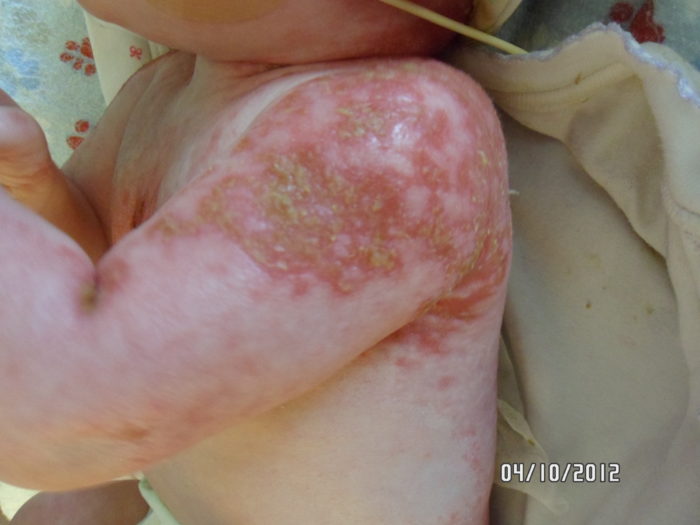
It’s imperative that the skin erosions are treated properly as the open skin can become infected and infections can lead to other issues or even be life-threatening. The NFED’s research experts developed guidelines to help families and physicians better understand how to treat the fragile skin. Your baby’s skin needs tender, loving, and gentle care. Print out these guidelines and share them with your pediatrician and dermatologist. While all cases are unique, the guidelines provide critical information learned from our families affected by AEC. It is important for you to find a good pediatric dermatologist to manage this treatment.
Download Skin Care Recommendations for Skin ErosionCleft Lip and/or Palate
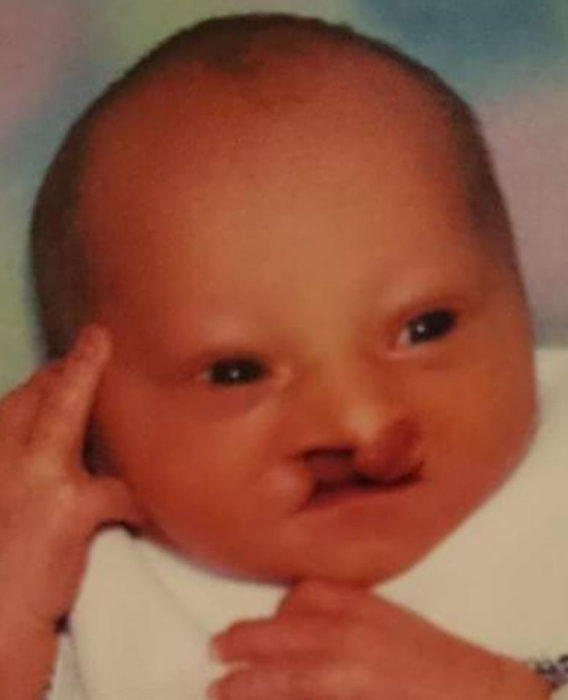
Infants affected by AEC syndrome may be born with a cleft lip and/or palate. Dr. Dana Jackson, an oral and maxillofacial surgeon, has written a new article for the NFED library explaining these and what you can expect.
“Cleft lip is an incomplete fusion of the facial structures that form the upper lip during growth. The lips form between the 4th to 7th week of pregnancy,” said Dr. Jackson. “If the tissues do not come together correctly, a cleft lip may occur. The cleft may be limited to just the lip or may extend into the nose. Less commonly, the cleft can occur on both sides of the mouth or as a single midline cleft. Clefting of the lip may be diagnosed during ultrasound around the 13th week in utero.”
Sometimes, it is not seen on prenatal ultrasound, so if your baby has one, it may come as a surprise. Sometimes the cleft or split includes the palate – the hard part of the roof of the mouth.
Treating a cleft often requires a team of specialists and several years of procedures. Learn more about cleft lip and/or palate in Dr. Jackson’s article.
Download Cleft Lip and Cleft Palate ArticleEye Issues
Some infants with AEC syndrome are born with their upper and lower eyelids fused together. It’s a condition called ankyloblepharon. The bands can be very thin and break easily or they may be thicker and involve more of the lids. Often these connections, called “ankyloblepharon filiforme adnatum”, are merely string-like bands attaching the upper to the lower lids. The physician will usually separate the bands of tissue shortly after birth either by traction or by minor surgical division. Typically, the baby will have a short course of eye drops immediately after the procedure, usually to prevent infection in the small wounds.
According to Richard A. Lewis, M.D., M.S., unless the cutting of the bands gets infected, no additional care is expected. The child should be monitored by a pediatric ophthalmologist (NOT optometrist), to develop the treatment plan.
Individuals with AEC also experience light sensitivity, properly known as photodysphoria (discomfort in bright light; sometimes physicians will use inadvertently the term “photophobia”, fear of light, which properly implies painful aversion to light, which is almost never the situation in AEC). Consider this in the presence of bright lights or when you take your baby out in sunlight. Simply avoiding the sudden exposure to bright sunlight or using protective shielding will minimize the issue.
Heat Intolerance
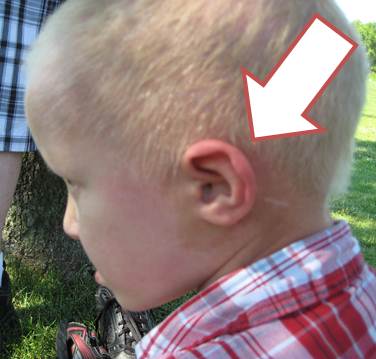
Individuals affected by AEC syndrome typically are intolerant to heat because their sweat glands don’t function normally. In a baby, this can appear as an unexplained fever. Or, your baby be irritable if overwarm from being swaddled or dressed too warmly. Your baby should not be put under warming lights or heat lamps since they can’t regulate their body temperature.
Limb Abnormalities in AEC Syndrome
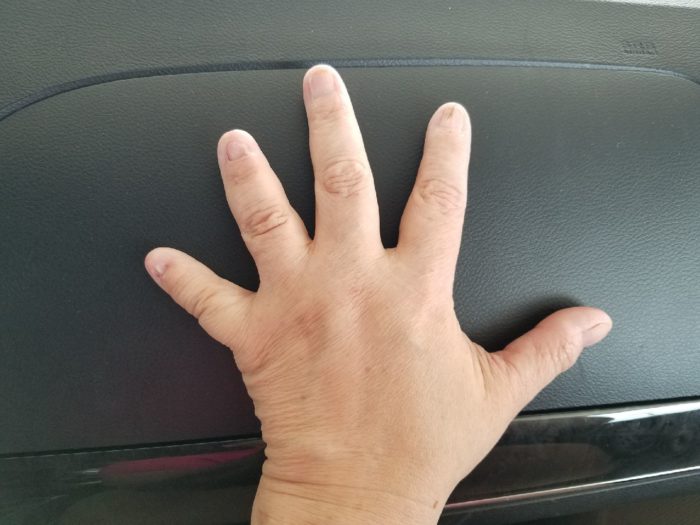
Some babies with AEC may have fingers or toes which are joined. This is called syndactyly. Daniel C. Sasson and Arun K. Gosain, M.D. co-authored a new library article for the NFED called “Ectodermal Dysplasia Syndromes and Associated Limb Abnormalities.” They explain two types of syndactyly, simple and complex, and how they are typically treated.
The challenges mentioned above are some of the major ones to be aware of at birth. Visit our AEC syndrome page to read a more comprehensive list. Plus, you can find additional educational articles in our library and throughout this website.
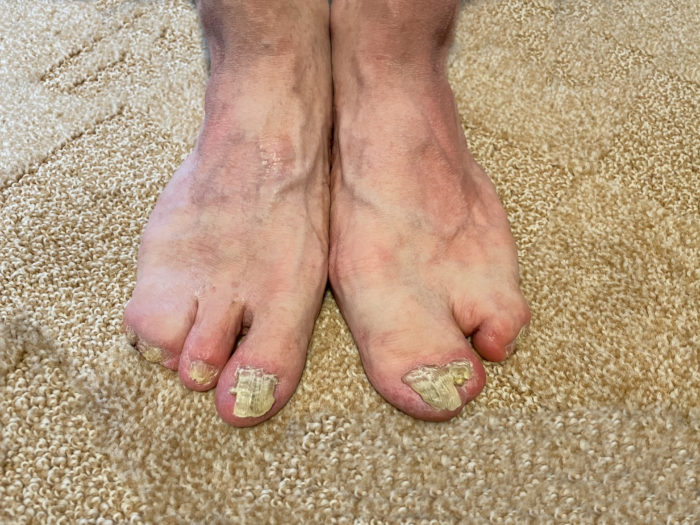
In our AEC Facebook group, NFED parents shared their recommendations for what medical issues to keep in mind when you child is little.
Brian M., a dad of a toddler with AEC said, “Highly recommend focusing on speech ASAP. Try teaching him to use both lips and tongue so he will be ahead of the curve when it comes time.”
Tina L. suggested to new families, “If he has small ear canals I would focus on his hearing as in our case, the small ear canals have caused moderate hearing loss in both ears (and she passed her newborn screen, too). Our second concern was overheating as our daughter doesn’t really sweat. We have a digital thermometer to check her. She’s also sensitive to bright light and had bad silent reflux (but she had a lip and palate cleft and an NG tube.”
It is important for your child to be followed by an ear, nose and throat physician (pediatric, if one is available).
Read Article about Limb AbnormalitiesConnect With Our AEC Syndrome Family
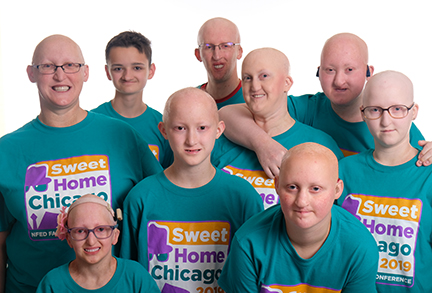
A new baby and a new diagnosis can be overwhelming. We understand that and are here for you! Our compassionate staff will help you every step of the way in your journey to learn about AEC and care for your little one. You can call our office at 618-566-2020 to talk to an actual person, get support and learn more about AEC.
If you have not yet done so, we also encourage you to join the NFED. You will receive extensive information, news, and treatment information about AEC syndrome.
We also invite you to join our private Facebook group called Ankyoblepharon-Ectodermal Defects-Cleft Lip and/or Palate (AEC) Syndrome. It’s a safe and welcoming place to learn from other families and share experiences. The members of this group know better than anyone what you may be going through. A mom named Daphne recently told a new parent in the group, “Just take it one day at a time. I’m sure there’s someone here who has experienced a little of everything associated.”
Sometimes, it’s really great to hear about another family’s journey with AEC. You may enjoy reading these Stories of Hope about other babies and individuals affected by AEC syndrome.
- Our Special Grandson
- Blessed On a Sunny Day
- Amelia’s Story with AEC Syndrome
- I Have AEC, And I Can Run
As your baby gets older, you will want to attend an NFED Family Conference held each summer. It’s a wonderful event where you can learn more about AEC syndrome, meet other families and hear the latest about AEC research studies. This summer’s Conference had to be postponed till 2022 due to COVID.
We hope that these resources will help you care for your little one. Always know that the NFED is here for you. You are not alone! We are only a phone call away!
